After largely ignoring photography over the past decades, Taiwan’s galleries, museums and art fairs are duly making up for lost time.
The Museum of Contemporary Art, Taipei (MOCA, Taipei) steps into the picture with New Generation Photographers of Taiwan (台灣新世代攝影), a group show that presents the work of 13 “up-and-coming talents.” According to the exhibition introduction, the show attempts to reveal the “perspective of the new era, which goes beyond the traditional and conservative notion of photography held by past generations.”
Who are the old fuddy-duddy photographers that the museum’s blurb refers to? Perhaps Chang Tsai (張才), honored with a retrospective at the Taipei Fine Arts Museum last year? Or, closer to our “era,” Magnum photographer Chang Chien-chi (張乾琦)? It doesn’t say. In any event, this is MOCA’s first group show devoted purely to Taiwanese photographers (last year’s four-person exhibit at the Zhongshan MRT excluded), and it’s perhaps telling that it is shown in its Studio gallery rather than in the museum’s main exhibit space.
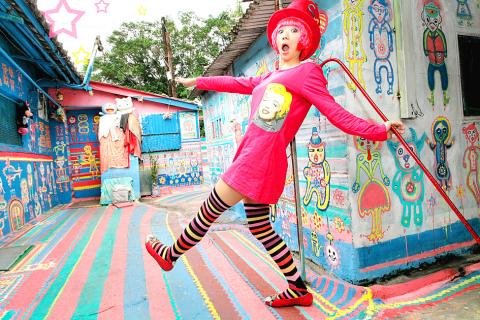
Photo courtesy of MOCA, Taipei
Still, curator Suan Hooi-wah (全會華), who runs the Taiwan International Visual Art Center, a gallery devoted to photography, has put together a fine exhibit — though the variety of work on display makes a coherent theme practically impossible. The show does, however, offer a panoramic perspective of what preoccupies this “new generation” of photographers: landscapes, people and art. Sound familiar? It should. And many of the photographers give explicit reference to what has come before.
Every section comes with an artist statement, succinct in style, as a guide for the viewer. Take Sim Chang (張哲榕): He uses “the power of pink to turn this world into an amusement park full of happiness and joy.” He’s not kidding. These cutesy photographs, many shot at theme parks, depict a doll-like woman dressed in a garish pink skirt and yellow rubber boots. Think waipai (outside photography, 外拍), popularized during the Japanese colonial era and revised over the past five years as amateur photographers and would-be models hit Taiwan’s most scenic locations.
Though Feng Chun-lan (馮君藍) whimsically dubs himself a “foolish sinner,” his monochrome portraits — a man holding an oil lamp or a pouting boy staring melancholically at the viewer — are anything but whimsical. Feng, a pastor at the Taiwan Chinese Rhenish Church (台灣中華基督教禮賢會), employs the precepts of Christian anthropology to create “spiritual portraits” that are, in this reviewer’s opinion, the show’s best because of their haunting psychological depictions of their subjects.
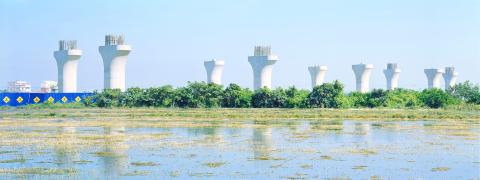
Photo courtesy of MOCA, Taipei
There are also some works evoking particular art styles, such as Deng Bo-ren’s (鄧博仁) delightfully amateurish collage works that comment on fashion and consumerism, and Chou Chih-lung’s (周志龍) surreal bedroom scenes. Elaine Lee’s (李宣儀) multiple-exposure color photographs, without digital manipulation, were inspired by the “atmospheric impressions” of 19th century paintings. For this reviewer, however, they are expressionist renderings at best, reminiscent of Zao Wou-ki’s (趙無極) late-1960s autumnal paintings.
But for the most part, Taiwan’s changing landscapes and cityscapes serve as the exhibit’s focal point. At first glance, Chung Shun-lung’s (鍾順龍) pictures of concrete columns (the kind used to construct freeways) look like drab photos taken by an engineer. Twenty minutes later, however, our party of three was still discussing the images’ techniques and topography.
Chung’s photos delineate the disjunction between past and present, the pillars disappearing into the horizon of some partially constructed future. The photos hint at the ongoing process of industrialization, its pristine white pillars rising up from the rice fields of Taiwan’s rapidly disappearing agricultural society.
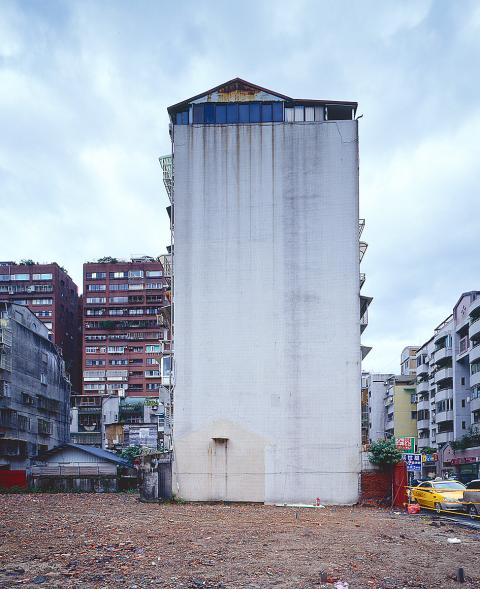
Photo courtesy of MOCA, Taipei
Taiwan’s ongoing development is similarly addressed by Chang Hsiao-chen (張小成). His images capture the manner in which a torn down structure imprints itself on the facade of other buildings that remain standing: the muddy silhouette of a small shack or the exposed brick outline of a demolished building. For Chang Hsiao-chen, the walls of a standing building serve as a metaphor for a headstone, the imprint its epitaph.
There is much else to see here that is worthwhile and this reviewer looks forward to future photography exhibits by Taiwan’s artists at MOCA. And, dare I say, in its main gallery space. There are plenty of subjects to draw on: portraiture from World War II to the present, or buildings ranging from pre-Japanese colonial era hovels to the phallic Taipei 101. As this exhibit reveals — along with shows at many other venues over the past two years — Taiwan certainly isn’t lacking in photographers who can depict the present with an eye on the past.
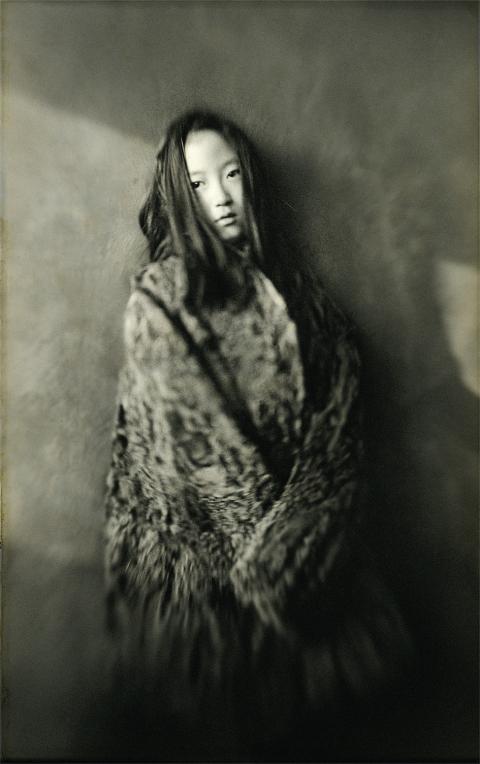
Photo courtesy of MOCA, Taipei
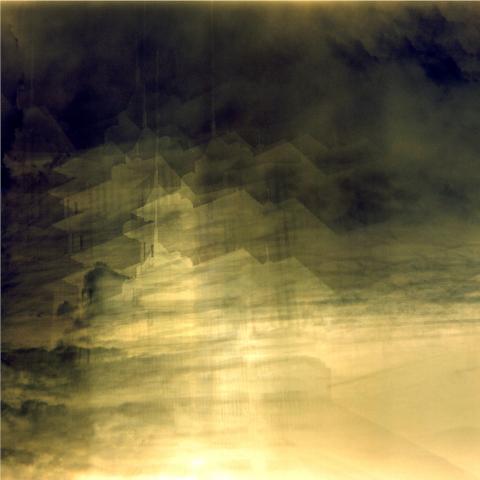
Photo courtesy of MOCA, Taipei

This month the government ordered a one-year block of Xiaohongshu (小紅書) or Rednote, a Chinese social media platform with more than 3 million users in Taiwan. The government pointed to widespread fraud activity on the platform, along with cybersecurity failures. Officials said that they had reached out to the company and asked it to change. However, they received no response. The pro-China parties, the Chinese Nationalist Party (KMT) and Taiwan People’s Party (TPP), immediately swung into action, denouncing the ban as an attack on free speech. This “free speech” claim was then echoed by the People’s Republic of China (PRC),

Exceptions to the rule are sometimes revealing. For a brief few years, there was an emerging ideological split between the Democratic Progressive Party (DPP) and Chinese Nationalist Party (KMT) that appeared to be pushing the DPP in a direction that would be considered more liberal, and the KMT more conservative. In the previous column, “The KMT-DPP’s bureaucrat-led developmental state” (Dec. 11, page 12), we examined how Taiwan’s democratic system developed, and how both the two main parties largely accepted a similar consensus on how Taiwan should be run domestically and did not split along the left-right lines more familiar in

Specialty sandwiches loaded with the contents of an entire charcuterie board, overflowing with sauces, creams and all manner of creative add-ons, is perhaps one of the biggest global food trends of this year. From London to New York, lines form down the block for mortadella, burrata, pistachio and more stuffed between slices of fresh sourdough, rye or focaccia. To try the trend in Taipei, Munchies Mafia is for sure the spot — could this be the best sandwich in town? Carlos from Spain and Sergio from Mexico opened this spot just seven months ago. The two met working in the

Many people in Taiwan first learned about universal basic income (UBI) — the idea that the government should provide regular, no-strings-attached payments to each citizen — in 2019. While seeking the Democratic nomination for the 2020 US presidential election, Andrew Yang, a politician of Taiwanese descent, said that, if elected, he’d institute a UBI of US$1,000 per month to “get the economic boot off of people’s throats, allowing them to lift their heads up, breathe, and get excited for the future.” His campaign petered out, but the concept of UBI hasn’t gone away. Throughout the industrialized world, there are fears that